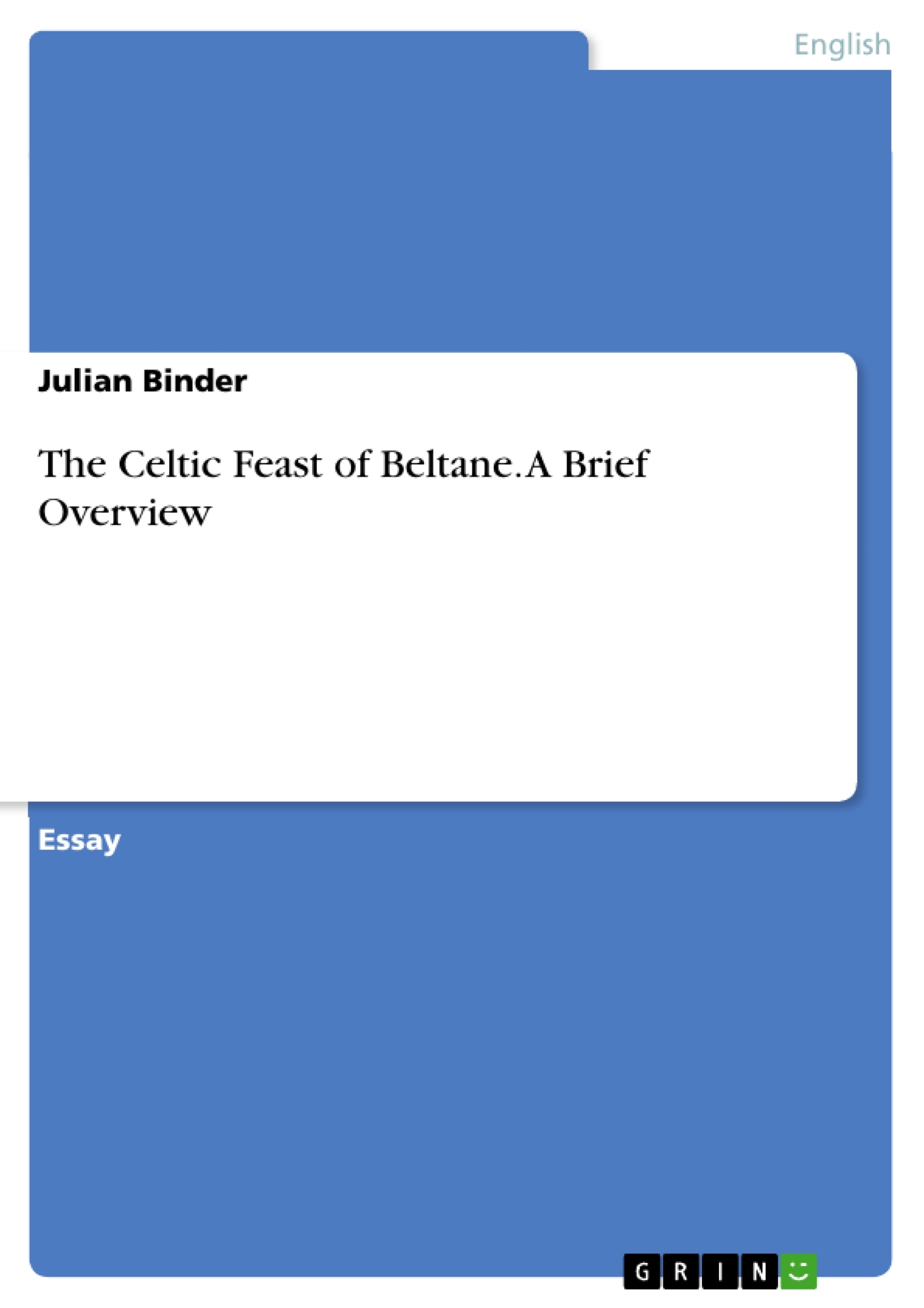In short, Beltane, sometimes also spelled 'Beltaine' in Ireland, 'Beltiunn' in Scotland, 'Shenn da Boaldyn' (the Calends of May) in Wales, and also formerly known as Cetshamhain, was – and in some places still is – a very important feast in the Gaelic world which marked the beginning of the warm half of the year, and which was especially associated with fertility and the victory of a solar deity over the powers of darkness.
With the approach of summer and a new harvest to come, growth and protection of crops and livestock played a very important role, particularly among peoples which depended entirely on agriculture. For this reason, it does not seem surprising that the old Celts had, already in pre-Christian times, certain rituals in order to appease the deity associated with the sun and to bid for protection of their cattle and their harvest.
On May Eve and May Day, Beltane fires were lit in order to honour and to encourage the power of the sun, and libations and other sacrifices were made to the respective gods and animals, as can be seen in the example above. However, there does not seem to have existed a unified way to celebrate Beltane. Local variations and different traditions can be observed, and it is very difficult to make universally valid claims concerning the procedures of the Celtic Beltane feasts in different areas.
It is, nevertheless, the aim of this paper to provide a very brief overview of this very important Celtic feast. In the following lines, the most important days of the Celtic ritual year will be introduced, and it will be attempted to answer the questions “what is Beltane?”, “where does the name come from?”, “how was it celebrated?”, and “why was it so important?” Moreover, some interesting Beltane traditions and rituals will be presented, and a very brief overview of some present-day Beltane survivals and revivals will be provided.
Table of Contents
- I. Introduction
- II. The origins of Beltane
- III. Beltane rites and traditions
- IV. Survivals and revivals
Objectives and Key Themes
This paper aims to provide a brief overview of Beltane, a significant Celtic feast marking the beginning of the warm half of the year, and its associated traditions. The paper explores the origins of Beltane, its celebration rituals, and its importance in Celtic culture. It also examines the survival and revival of Beltane traditions in modern times.
- The origins and historical context of Beltane
- The role of Beltane in the Celtic ritual year and its significance for agriculture and livestock
- The various rites and traditions associated with Beltane celebrations
- The survival and revival of Beltane traditions in contemporary times
- The connection between Beltane and the cycle of nature, particularly the transition from winter to summer
Chapter Summaries
- Introduction: This chapter introduces Beltane, a significant Celtic feast marking the beginning of the warm half of the year, and provides a brief overview of its historical context, importance, and the paper's objectives. It highlights the importance of Beltane in Celtic culture, particularly its association with fertility, the sun's power, and the protection of crops and livestock.
- The origins of Beltane: This chapter explores the origins of Beltane, drawing on historical and literary sources. It discusses the lack of written records from the ancient Celts and the importance of Irish sources, archaeological findings, and ethnographical accounts in understanding Celtic beliefs and traditions. The chapter also examines the connection between Beltane and the Celtic ritual year, particularly its relation to the seasons and the movement of livestock.
- Beltane rites and traditions: This chapter delves into the various rites and traditions associated with Beltane celebrations. It describes the practices, rituals, and symbolism associated with Beltane, including the lighting of fires, libations, sacrifices, and the celebration of fertility. The chapter also explores the diversity of local traditions and variations in Beltane celebrations across different regions.
- Survivals and revivals: This chapter examines the survival and revival of Beltane traditions in modern times. It discusses how certain aspects of Beltane celebrations have been maintained and how others have been revived in contemporary culture. The chapter also explores the contemporary significance of Beltane and its role in modern paganism and other spiritual movements.
Keywords
The main keywords and focus topics of this paper include: Beltane, Celtic ritual year, Celtic mythology, fertility, sun worship, agriculture, livestock, fire rituals, libations, sacrifices, seasonal festivals, cultural traditions, survival, revival, contemporary paganism.
- Quote paper
- M.A. Julian Binder (Author), 2015, The Celtic Feast of Beltane. A Brief Overview, Munich, GRIN Verlag, https://www.grin.com/document/323656



